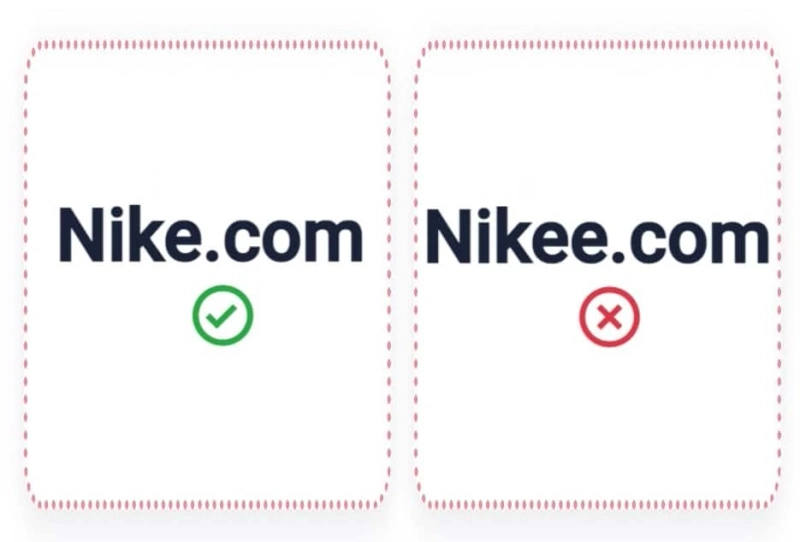Typosquatting is a type of malicious domain-impersonation attack. Through typosquatting, malicious affiliates seek to deceive users by developing a URL similar to that of a legitimate website. Misspelled search queries are common among modern-day users.
It happens that we often enter the wrong URL with mismatched letters. Typosquatting comes into the picture when a user commits typographical errors. When a user enters a wrong or misspelled URL, this incorrect URL will redirect them to an alternate website.
Created by nefarious affiliates and hackers, this alternate website can affect your device’s integrity. Typosquatting, also known as URL hijacking, can dent the prestige of companies and affect your affiliate marketing programs.
Typosquatting is also a type of social engineering attack. Threat actors register domain names similar to popular websites. The fake websites, designed to redirect users, sell fake products and services.
Threat actors fool victims into believing they are interacting with the real company. Typosquatting facilitates a range of malicious acts that can cause financial damage. Companies are implementing typosquatting protection to secure their brand’s reputation.
How does Typosquatting works?
In most cases, unscrupulous affiliates can impersonate the domains with the help of the following:
- Leveraging a different domain
- Using similar-looking alphabets to hide the real domain
- Addition of periods to the URL
- Using a misspelled domain
- Adding related words into the domain
Typosquatting resembles the original domain and tricks users into believing that it is a real website and may comprise more than one wrong character.
Companies are deploying solutions that will identify and monitor instances associated with typosquatting. Registering a domain is easy, and threat actors can note several variations of the original target URL. Here are specific human errors that typosquatting relies upon:
Spelling Mistakes
If you think that typos can increase the instances of URL hijacking, you’re wrong. Most often, users are unaware of the actual spelling of a specific URL, and threat actors are well-aware of this fact and leverage this weakness. Nowadays, many companies are registering the misspelled variations of their domains to save visitors from typosquatting.
Typical Typographical Errors
Typos are the most common errors that malicious actors leverage. Those who type quickly or depend on autocorrect features are vulnerable to large-scale typosquatting attacks.
Domains with Hyphens
Removing or adding a domain can also create confusion. Hyphenated domains can trick users into believing it is an original website. They may even perform transactions that are dangerous to their device’s integrity.
The Purpose of Typosquatting
Typosquatting is a major form of ad fraud and can affect your company’s overall reputation. Here is the list of purposes behind executing typosquatting.
- Extortion
Nefarious affiliates often rely on typosquatting to extort money from the website’s owner.
- Advertisement Frauds
Nowadays, hackers rely on typosquatting to create digital fraud on a large scale. If you have an affiliate program, always be aware of typosquatting. They can monetize the fake domains with ads and trick users into visiting them. At times, they also redirect traffic to these fake domains.
- Stealing of Information
Malicious hackers may also steal the credit information of your legitimate customers. Through these fake domains, they may convince your users to order products and services. But in reality, the user will never get the products and services.
Financial objectives are the primary reason behind the occurrence of typosquatting, and threat actors may also leverage typosquatting to steal the credit data of your users. No doubt, typosquatting can dent your brand’s reputation.
The Common Forms of Typosquatting
Typosquatting can assume various forms. Some of them are as follows.
Imitators
As outlined above, the fake website passes itself as the real thing. The main purpose of this imitating website is to create a phishing scam and collect personal data. Personal data may include the credit card information of visitors.
Acting as Bait
The fake website created by malicious actors purports to sell you certain items available on the original website. But after placing the order and paying for it, the buyer never receives the item they want.
Affiliate Links
The fake website redirects traffic back to your company via affiliate links. In this way, unscrupulous affiliates earn commissions from all purchases, and it also affects the confidence of your legitimate affiliates.
Installing Malware
Another form of typosquatting is installing malware on your users\' devices. And when this happens, the users may blame your company.
Companies are implementing domain monitoring tools to optimize their affiliate marketing tools.
How do Virus Positive Technologies help you overcome Typosquatting Threats?
Securing your affiliate network is easy with VPT’s typosquatting monitoring tools. VPT can also help your company with affiliate fraud detection. VPT has a dedicated fraud detection team that monitors and identifies typosquatting attacks. You can secure your company’s reputation and budget with VPT.
0



